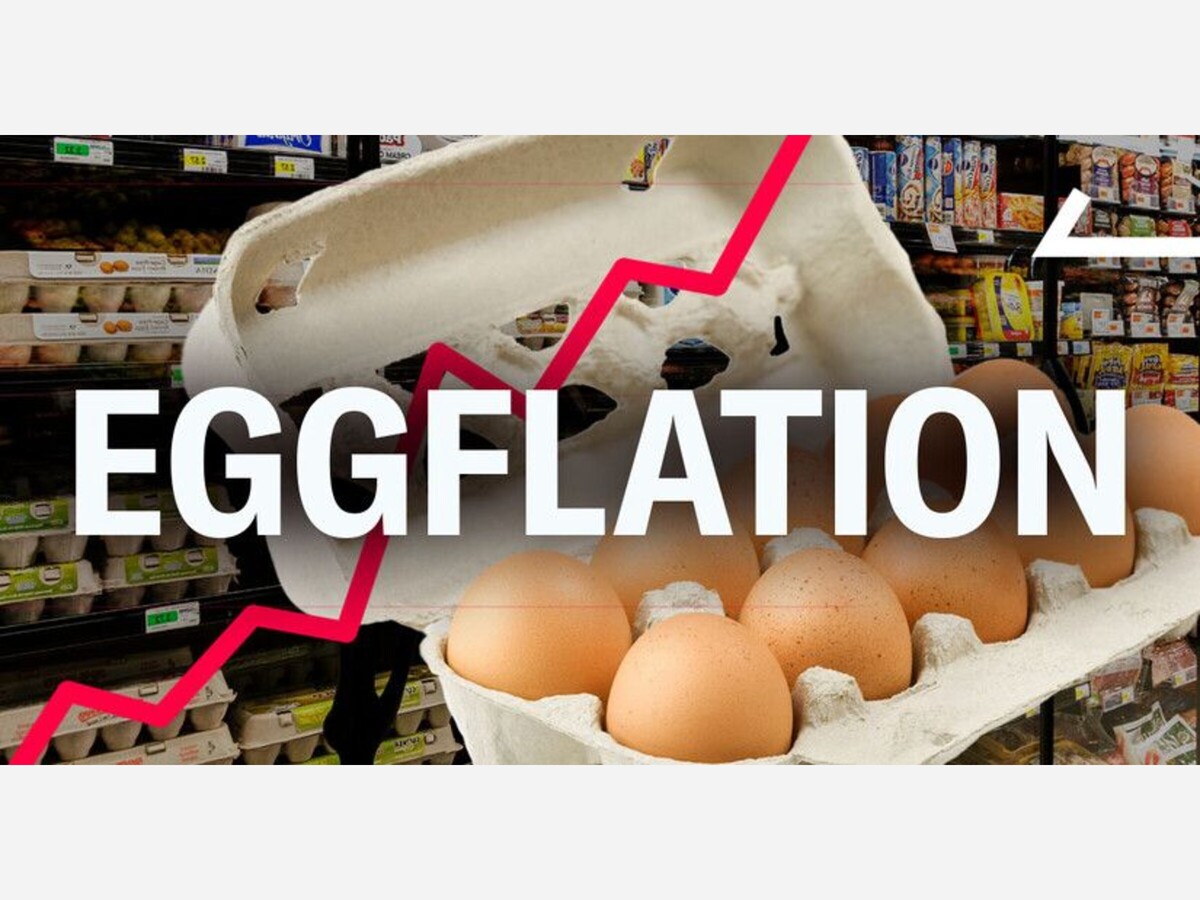Image

‘Eggflation’: Why Are Eggs So Expensive In MD, When Will Cost Go Down?
If projections play out, egg prices could increase another 20 percent by the end of 2025 because of a resurgence of the bird flu in MD.

Bird flu is a primary driver of the higher prices Maryland consumers have been paying for eggs and, if experts are right, will continue to pay.
The Labor Department’s December inflation report showed the price of a dozen Grade A eggs rose to $4.15 in December, up from about $3.30 in October. In some parts of the country, a dozen eggs can cost a buck each — if consumers can find them.
December egg prices were 37 percent higher than they were during the same period in 2023. At the same time, the overall annual grocery inflation rate for December was 1.8 percent.
If projections from the Agriculture Department prove out, egg prices could increase another 20 percent by the end of 2025 because of a resurgence of bird flu.
“Not to be the bearer of bad news, but we’re in this for a while,” Emily Metz, president and CEO of the American Egg Board, told CNN Business. “Until we have time without a detection, unfortunately, this very, very tight egg supply is going to continue.”
We found Grade A large eggs for about $4.17 a dozen at Walmart stores and $4.19 a dozen at Target stores in Maryland. Harris Teeter was charging $5.19 a dozen for Eggland's Best eggs; Safeway was charging $5.99 a dozen for Lucerne eggs.
Organic or specialty eggs can cost even more.
In some regions, prices have exceeded $7 per dozen, particularly for organic or specialty eggs. Consumers are feeling the pinch, and experts warn that prices could climb even higher in the coming weeks as the supply chain remains strained.
Pete and Gerry's organic, free-range eggs are $7.69 a dozen, while Happy Egg's free range organic eggs are $7.49.
Below, here is what you need to know about “eggflation”:
How Widespread Is Bird Flu?
Active investigations of avian flu outbreaks are ongoing in about two dozen states, covering everything from commercial operations to backyard flocks.
Maryland had four commercial flocks and a total of 627,500 birds affected in a Jan. 22 outbreak. One outbreak that affected 108,400 birds was at a commercial broiler operation in Caroline County.
Since the current outbreak began in 2022, about 135 million egg-laying hens have been destroyed. About 13 million have been euthanized since December resulting in “record high” prices as producers “struggled to provide a consistent supply to consumers,” according to the latest USDA Egg Markets Overview.
What Are Grocers Doing?
Some independent grocery stores are holding the line on egg prices as a way to build customer loyalty and push back against the perception that absent mass buying power, independent stores are too expensive.
For example, a LaBonne’s store in Watertown, Connecticut, was selling Egglands Best eggs for $3.99 a dozen earlier this month. Bob LaBonne Jr., the president and CEO of the four-store chain, told Grocery Dive the lower prices underscore the store’s commitment to affordable groceries.
“As a smaller store, you have the image of being high-priced. So the last thing you want to do is confirm that by being overly aggressive on trying to get margins on items that are sensitive,” LaBonne told the digital grocery news site.
The USDA said many grocery stores are putting limits on how many eggs a consumer can buy per shopping trip to stretch limited supplies and dissuade customers from panic-buying.
What Are Egg Producers Doing?
Unlike the 2015 outbreak of avian influenza spread by wild birds during migration that lasted for only a season, this one has been persistent and has spread beyond birds to dairy cattle, to cats and to people, where mutations have sparked pandemic worries.
“By any metric, you look at animal epizootics, basically animal-based-pandemics, this is the largest one we’ve ever had,” Maurice Pitesky, an associate professor at the UC Davis School of Veterinary Medicine who focuses on highly pathogenic avian influenza and disease modeling, told Business Insider.
“It’s in the environment. We see it in dairy lagoons. We see it in human wastewater,” he said. “So it's ubiquitous at this point.”
That means chickens can get bird flu from different sources, and there’s not much egg farmers can do to stop its spread. Surveillance and tracking of the virus help producers harden husbandry practices and biosecurity measures, but doing so can be expensive and drive egg prices even higher, according to experts.
“We’re all in uncharted territory,” Brian Moscogiuri, a global trade strategist at Eggs Unlimited, a California-based egg supplier, told Business Insider, adding, “The producers don’t really have a recourse.”
Are Eggs Safe To Eat?
According to guidance from the Food and Drug Administration, the chances of contaminated eggshells making it to a grocery store shelf is “low” and proper storage and preparation further reduce the risk.
There is no evidence the bird flu virus can be transmitted to humans through properly prepared food, according to the agency.
Eggs should be refrigerated immediately after purchase and eggs should “until both the yolk and the white are firm,” the agency says. Dishes containing eggs, such as casseroles, should be cooked to 160 degrees Fahrenheit.